- Clone
- DH2 (See other available formats)
- Regulatory Status
- RUO
- Other Names
- GNLY, 519, LAG2, NKG5, LAG-2, D2S69E, TLA519
- Isotype
- Mouse IgG1, κ
- Ave. Rating
- Submit a Review
- Product Citations
- publications
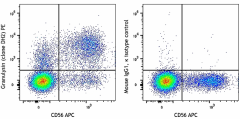
-

Human peripheral blood lymphocytes surface stained with CD56 APC then intracellularly stained with Granulysin (clone DH2) PE (left) or mouse IgG1, κ PE isotype control (right).
| Cat # | Size | Price | Quantity Check Availability | Save | ||
|---|---|---|---|---|---|---|
| 348003 | 25 tests | 104€ | ||||
| 348004 | 100 tests | 224€ | ||||
Granulysin is a member of the saposin-like protein family of lipid binding proteins (SAPLIP). It is expressed by NK cells and cytolytic T lymphocytes (CTL) as 9 kD and 15 kD forms. The 9 kD form is derived from the 15 kD form by cleavage at both amino- and carboxy-termini. Granulysin has broad cytolytic activities against a variety of tumor cells and microbes, including Gram-positive and -negative bacteria, fungi and parasites. It also functions as a chemoattractant for inflammatory cells and activates the cells expression of cytokines and chemokines.
Product DetailsProduct Details
- Verified Reactivity
- Human
- Antibody Type
- Monoclonal
- Host Species
- Mouse
- Immunogen
- Recombinant 9 kD granulysin
- Formulation
- Phosphate-buffered solution, pH 7.2, containing 0.09% sodium azide and BSA (origin USA)
- Preparation
- The antibody was purified by affinity chromatography, and conjugated with PE under optimal conditions.
- Concentration
- Lot-specific (to obtain lot-specific concentration and expiration, please enter the lot number in our Certificate of Analysis online tool.)
- Storage & Handling
- The antibody solution should be stored undiluted between 2°C and 8°C, and protected from prolonged exposure to light. Do not freeze.
- Application
-
ICFC - Quality tested
- Recommended Usage
-
Each lot of this antibody is quality control tested by intracellular immunofluorescent staining with flow cytometric analysis. For flow cytometric staining, the suggested use of this reagent is 5 µl per million cells in 100 µl staining volume or 5 µl per 100 µl of whole blood.
- Excitation Laser
-
Blue Laser (488 nm)
Green Laser (532 nm)/Yellow-Green Laser (561 nm)
- Application Notes
-
Clone DH2 recognizes both the 9 kD and 15 kD isoforms of Granulysin.1
ELISA Capture: To measure human granulysin, this antibody can be used as a capture antibody in sandwich ELISA format and paired with the biotinylated DH10 antibody (Cat. No. 526103) as the detection antibody. Recombinant Human Granulysin (ELISA Std.) (Cat. No. 552109) can be used as the protein standard.
Flow Cytometry: The fluorochrome-labeled DH2 antibody is useful for intracellular and membrane-bound immunofluorescent staining and flow cytometric analysis to identify granulysin-producing cells within mixed cell populations.
Note: For testing human granulysin in serum, plasma or cell culture supernatant, LEGEND MAX™ Human Granulysin ELISA Kit with Pre-coated Plates (Cat. No. 438007 & 438008) are specially developed and recommended. - Application References
-
- Hanson DA, et al. 1999. Mol. Immunol. 36:413.
- Spada FM, et al. 2000. J. Exp. Med. 191:937.
- Product Citations
-
- RRID
-
AB_10559756 (BioLegend Cat. No. 348003)
AB_2263307 (BioLegend Cat. No. 348004)
Antigen Details
- Structure
- Saposin-like protein family of lipid binding protein, 9 kD and 15 kD
- Distribution
-
NK cells, cytolytic T cells
- Function
- Cytolytic against bacteria, fungi, parasite and tumor cells; chemoattract inflammatory cells
- Cell Type
- NK cells, T cells
- Biology Area
- Apoptosis/Tumor Suppressors/Cell Death, Cell Biology, Immunology, Innate Immunity
- Molecular Family
- Cytokines/Chemokines
- Antigen References
-
1. Krensky AM. 2000. Biochem. Pharmacol. 59:317.
2. Deng A, et al. 2005. J. Immunol. 174:5243.
3. Kaspar AA, et al. 2001. J. Immunol. 167:350.
4. Krensky AM and Clayberger C. 2009. Tissue Antigens 73:193. - Gene ID
- 10578 View all products for this Gene ID
- UniProt
- View information about Granulysin on UniProt.org
Related Pages & Pathways
Pages
Related FAQs
- What type of PE do you use in your conjugates?
- We use R-PE in our conjugates.
Other Formats
View All Granulysin Reagents Request Custom Conjugation| Description | Clone | Applications |
|---|---|---|
| PE anti-human Granulysin | DH2 | ICFC |
| Alexa Fluor® 647 anti-human Granulysin | DH2 | ICFC |
| Purified anti-human Granulysin | DH2 | ELISA Capture,IHC-F |
| APC anti-human Granulysin | DH2 | ICFC |
| PE/Cyanine7 anti-human Granulysin | DH2 | ICFC |
| TotalSeq™-B1495 anti-human Granulysin Antibody | DH2 | ICPG |
Customers Also Purchased
Compare Data Across All Formats
This data display is provided for general comparisons between formats.
Your actual data may vary due to variations in samples, target cells, instruments and their settings, staining conditions, and other factors.
If you need assistance with selecting the best format contact our expert technical support team.
-
PE anti-human Granulysin

Human peripheral blood lymphocytes surface stained with CD56... -
Alexa Fluor® 647 anti-human Granulysin
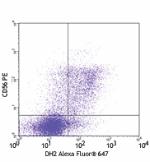
Human peripheral blood lymphocytes surface stained with CD56... 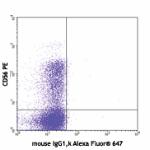
-
Purified anti-human Granulysin
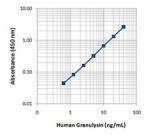
-
APC anti-human Granulysin

Human peripheral blood lymphocytes surface stained with CD56... -
PE/Cyanine7 anti-human Granulysin

Human peripheral blood lymphocytes surface stained with CD56... -
TotalSeq™-B1495 anti-human Granulysin Antibody
 Login / Register
Login / Register 










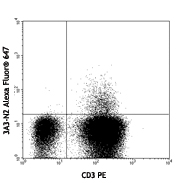
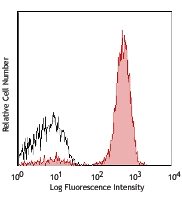
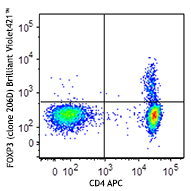



Follow Us